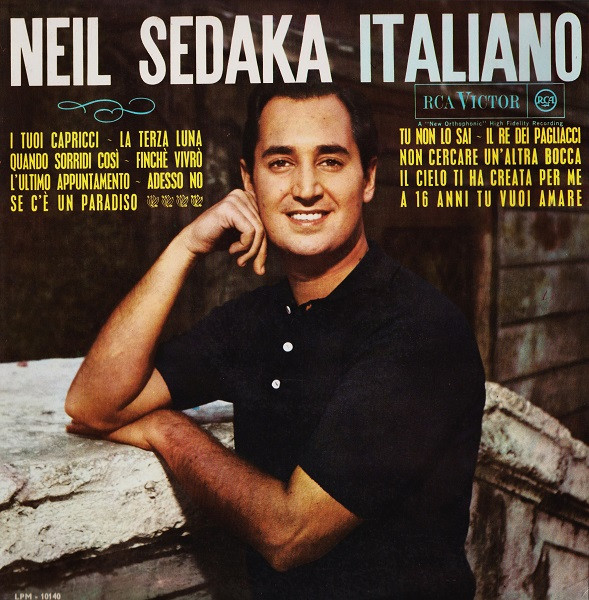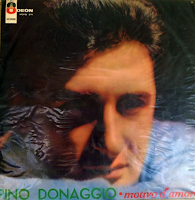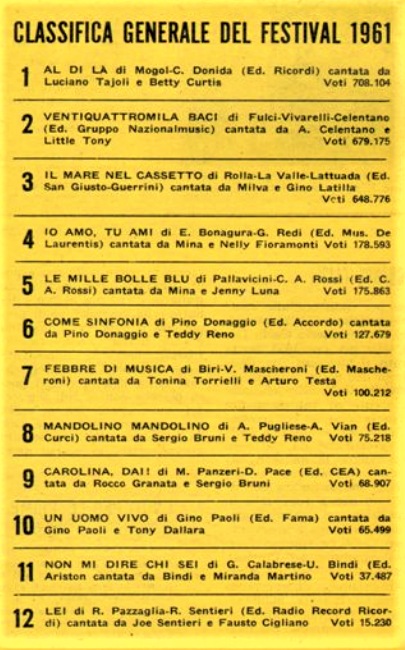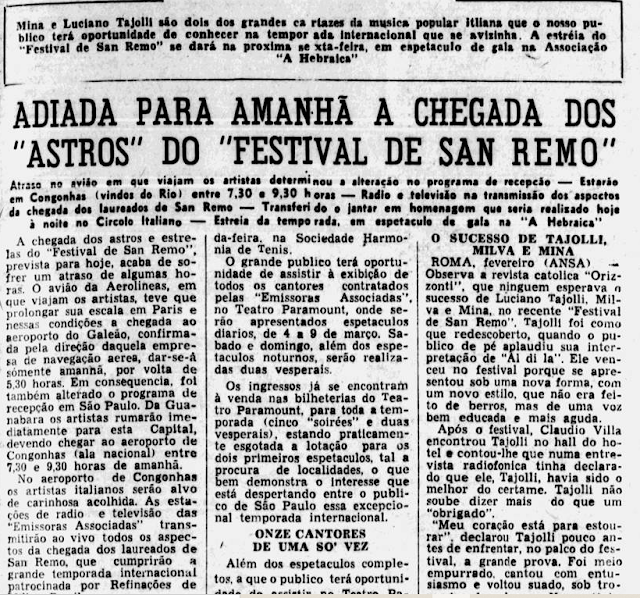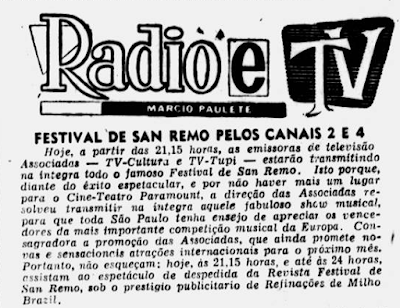Neil Sedaka entered the top-ten Billboard charts in late 1959, with 'Oh! Carol' which he wrote about Carole King, a song-writer who worked mainly out of the legendary Brill Building on Broadway, New York like himself and Howard Greenfield. A year later, on 26 October 1960, Sedaka placed 'Stairway to heaven' at # 9; two months later, on 31st December 1960 he took 'Calendar girl' to # 4.
His next single missed the top-ten by a fraction: 'Little devil' got as high as # 11 on 8 May 1961; 5 months later, on 27 November 1961, Sedaka charted with 'Happy birthday, sweet sixteen' at # 6.
Next year, on 7 July 1962, Lady Luck smiled at Sedaka... he took 'Breaking up is hard to do' all the way to # 1 at the Billboard charts for 2 weeks; three months later Neil reached # 5 with 'Next door to an angel'... and that was about it. It seemed like Neil Sedaka had run out of luck...
1963 was a non-eventful year for Neil Sedaka: 'Alice in wonderland' could get no higher than # 17; 'Let's go steady again' reached # 26 and 'Bad girl' no higher than # 33.
Times were changing fast... The Beatles were all the rage in the United Kingdom and the US teenagers were biding their time to get into Beatlemania. Neil Sedaka flew to Italy and recorded some Italian songs which became hits almost instantly...
Actually, Sedaka's Italian career started earlier in 1961, when he recorded an Italian-language version of 'Little devil' titled 'Esagerata' which was well received by the Italian public. By 1963, when his US chart career was on the wane, Sedaka visited Rome and recorded a few Italian songs which became major hits like 'La terza luna', 'I tuoi capricci' and others.
1961 - Little devil / I must be dreaming (45n1174)
1961 - Esagerata (Little devil) /Un giorno inutile (45n1188)
1961 - Happy birthday, sweet sixteen / Don't lead me on (45n1230)
1962 - King of clowns / Walk with me (45n1281)
1962 - Breaking up is hard to do / You're knockin' me out (45n1294)
1963 - Tu non lo sai (Breaking up is hard to do) / Finchè vivrò (45n1308)
1963 - Il re dei pagliacci / La terza luna (45n1309)
1963 - Next door to an angel / I belong to you (45n1315)
1963 - I tuoi capricci / Non cercare un'altra bocca (45n1328)
1963 - Adesso no / Quando sorridi così (45n1366)
1964 - La notte è fatta per amare / La forza del destino (45n1377)
1964 - Manuela / Lunita consejera (45n1388)
1964 - La luna a fiori / Ricordati ancora (45n1411)
1965 - Non basta mai / Darei 10 anni (45n1444)
1966 - Lettera bruciata / L'ultima foglia (45n1477)
1969 - L'addio / Passo e chiudo... (Atlantic, ATL NP03123)
'Neil Sedaka italiano' was his 1st Italian-language album. Read the liner notes below:
Neil Sedaka può a ragione essere considerato il pionere della moda alquanto diffusa oggi tra i grandi cantanti della musica leggera internazionale: quella cioè di cantare in italiano. Basterà ricordare il successo incontrato alcuni anni fa dalla traduzione di 'Little devil' nell'italiana 'Esagerata', che fu sicuramente uno dei primi passi di questo fortunato cammino su una via che in seguito molti altri hanno battuto.
Se per molti questa esperienza italiana è stata un episodio della loro carriera, per il populare Neil non si può dire altrettanto: ci ha infatti abituati alle sue periodiche visite per cui vederlo registrare nei nostri studi ci sembra la cosa più naturale del mondo.
In questo microsolco sono raccolte, assieme a successi americani, canzoni di alcuni tra i migliori autori italiani.
Gli stessi autori della 'La terza luna' e de 'I tuoi capricci', Luis Enriquez e Franco Migliacci si son messi al lavoro e, più che mai in forma, hanno scritto due belle canzoni: 'L'ultimo appuntamento' e 'Se c'è un paradiso', particolarmente adatte allo stile e al genere del popolare cantante d'oltreoceano e che sicuramente godranno i favori di quanti apprezzano i due già noti motivi.
Oltre alle conosciute 'Finchè vivrò', 'Tu non lo sai', 'Il re dei pagliacci', 'Non cercare un'altra bocca' vi sono incise altre tre piacevoli canzoni: 'Quando sorridi così', una musica del bravo Enriquez questa volta su testo di Fersen, 'Il cielo ti ha creata per me' di Rossi e Pelleschi e infine la gustosissima 'A 16 anni tu vuoi sempre amare' di Bardotti-Ronnye-Grosman. Particolarmente bella la canzone 'Adesso no', dovuta alla fertile vena del nostro Gianni Meccia.
Sedaka at the Caelian Hill in 1962.
Lato 1 (A-side)
1. I tuoi capricci (Migliacci-Enriquez) (Look inside your heart)
2. Quando sorridi così (Ofir-Enriquez)
3. La terza luna (Migliacci-Enriquez) (Waiting for never)
4. Adesso no (Gianni Meccia)
5. Finchè vivrò (As long as I live) (Greenfield-Sedaka-Pallesi)
6. Il cielo ti ha creata per me (Rossi-Pelleschi)
Lato 2 (B-side)
1. Tu non lo sai (Breaking up is hard to do) (Greenfield-Sedaka-Pallesi)
2. Non cercare un'altra bocca (Greenfield-Sedaka-Gentile) (Walk with me)
3. Il re dei pagliacci (King of clowns) (Greenfield-Sedaka-Ammeni)
4. L'ultimo appuntamento (Franco Migliacci-Luis Enriquez)
5. A sedici anni tu vuoi amare (Ronnie Grossman-Sergio Bardotti) (It hurts to be sixteen)
6. Se c'è un paradiso (Franco Migliacci-Luis Enriquez)
Singles releases
Eight of the songs on this album saw 45 rpm singles releases prior to being compiled together for this album.
1962: "Tu non lo Sai" b/w "Finche Vivro"
1963: "La Terza Luna" b/w "Il Re Dei Pagliacci"
1963: "I Tuoi Capricci" b/w "Non Cercare Un'Altra Bocca"
1963: "Adesso No" b/w "Quando Sorridi Cosi"
Sedaka Italiano volume 2
is a 1965 compilation containing a second set of Italian-language recordings by Neil Sedaka. It was released on RCA Victor's Italiana label.
Lato 1 (A-side)
1. La notte è fatta per amare (Another day, another heartache) (Greenfield-Sedaka-Migliacci)
2. Sarà, sarà
3. Viene la notte
4. Mai sarà come te (She'll never be you)
5. Ricordati ancora (Sergio Bardotti-Luis Enriquez)
6. Matto (The dreamer)
Lato 2 (B-side)
1. Non basta mai (G.P.Reverberi-Sergio Bardotti)
2. I primi giorni (Bad girl)
3. La luna a fiori (Alberto Testa-Carlo Pes)
4. Darei 10 anni (Carlo Rossi-Robifer)
5. La forza del destino (Carlo Rossi-Robifer)
6. Che non farei (I hope he breaks your heart)
Sedaka plays soccer on Via Appia; at Piazza di Spana steps in 1964.
RCA Victor – LPM 10181 - released in 1966
Lato 1 (A-side)
1. Ricordando (Fumo negli occhi) (Smoke gets in your eyes) (Kern-Harbach-Nomen)
2. Un'ora sola ti vorrei (Marchetti-Berlini)
3. 'Na sera è maggio (Ctofli-Pisano)
4. Questa notte saprò (Again) (Newman-Cochran-Nisa-Devilli)
5. Estrellita (Ardo-Ponce) (early 20th century Mexican folk song in Italian)
6. Cantando con le lacrime agli occhi (Mascheroni-Panzeri)
Lato 2 (B-side)
1. Sorridi (Smile) (Chaplin-Turner-Parsons-Ardo)
2. I' te vurria vasa' (Russo-Di Capua)
3. Arcobaleno (Over the rainbow) (Arlen-Harburg-Devilli)
4. Tu musica divina (D'Anzi-Bracchi)
5. L'amore è una cosa meravigliosa (Love is a many-splendored thing) (Fain-Webster-Devilli)
6. Si, amore (All the way) (Van Heusen-Cahn-Testoni-Abbate)
the titles in bold are sung in the Neapolitan dialect
